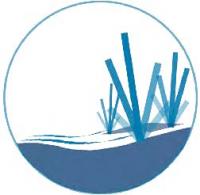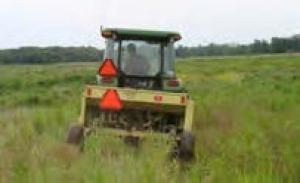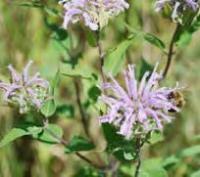Plantings for buffers can vary widely depending on site conditions and project goals. In most cases buffers are seeded with native seed mixes but some projects also incorporate containerized plants or trees and shrubs. Other considerations for buffer planting include seed mix selection, use of temporary cover crops, preferred planting dates, and inter-seeding to increase diversity of existing buffers. Links are provided in the information below for more detailed information in the Minnesota Wetland Restoration Guide.
-
Seed Mixes
-
Seed mixes for projects can include seed collected from the project site or nearby natural areas, “state seed mixes”, private vendor mixes, or custom mixes developed for site conditions. State seed mixes have been developed for a variety of project types including wetlands, prairies, forest edges, roadsides, riparian areas, and stormwater treatment systems. These mixes have been designed to increase diversity, create competition for invasive species, and promote plant community resiliency. Cover crops are not recommended in addition to permanent state seed mixes, as they already contain oats or winter wheat (depending on the season of planting).
-
Temporary Cover Crops and Mulch
-
Slough Grass, a common wetland cover crop The use of temporary cover crops (pdf) helps to stabilize project sites and minimize the need for
additional mulch. They can also provide time to observe weed problems and to allow for proper control before fall seeding. Temporary cover crops such as oats or winter wheat (the two species most commonly used) should be mowed to 10-12 inches before seeds mature and/or treated with herbicide (or harvested upon maturity) to prevent re-seeding. Slough grass is a common cover crop for wet areas. Perennial species are discouraged as temporary cover crops, as they require herbicide application before conducting seedbed preparation.
-
Cropping in Buffers
-
Buffers don’t have to be unproductive. Timber, nut or berry producing plants, or plants with biomass uses can all be incorporated into buffer plantings if allowed by conservation programs. Weed mats should be placed around each individual shrub for woody plantings in buffers instead of long rolls to promote growth of grasses and forbs that will increase stormwater filtering.
-
Planting Dates
-
Spring seeding is favored for upland grass establishment, while fall seeding is often favored for planting forb seed and rush seed to allow stratification (breaking seed dormancy) over winter. Fall dormant seeding should be conducted after October 15th in the northern half of the state and November 1st in the southern half of the state, before the soil freezes. Dormant seeding can aid the establishment of forbs and sedges in uplands where grasses can become more dominant with spring plantings. Dormant seeding is beneficial for pollinator projects with a high percentage of forbs and if hydrology will be restored in the fall, as it may be difficult to access the site after spring snowmelt. It is common to conduct dormant seeding shortly before snowmelt to ensure that seed is not lost from wind, birds, or rodents.
If a buffer project will be constructed in the spring or early summer, or will have flowing or fluctuating water levels, it may be better to seed later in the spring after water levels stabilize. Spring seeding of wetland and upland areas should be conducted before June 30th, as summer temperatures can lead to the loss of seedlings.
Containerized plants, vegetated mats, and bare root plants are most often planted in the spring when there is adequate rainfall and soil moisture. Containerized trees and shrubs can also be planted in late fall, before the ground freezes, but frost heave can be a problem in high moisture areas. The installation of woody plant cuttings is conducted from early spring until leaves start to develop.
The table below summarizes preferred seeding and planting dates for different types of seed and plants.
Planting Date Guidance for Restoration and BMP Projects
Note: Many projects will have NRCS, Mn/DOT, or other specifications that will define planting dates. Variance can often be granted due to seasonal conditions.
Dates included in the tables above represent average dates for Minnesota. Planting dates may be one to two weeks later in the northern half of the state and one to two weeks earlier in southern half of the state depending on seasonal conditions. Most seed mixes contain combinations of the vegetation types listed in the table; dates should be chosen that will ensure long-term success of the entire seed mix. Local staff should use their judgement about the most appropriate planting dates.
-
Seeding Wetlands and Retention Basins
-
Broadcast seeder State wet meadow and wet prairie seed mixes are designed to be used from the planned edge of open water (pool elevation) to around 1-1.5 feet in elevation depending on soil texture and capillary action of soil. Other considerations for the use of wetland seed mixes include the extent of hydric soils, and swales coming into a wetland. Upland mixes are used approximately 1-1.5 feet above pool elevation and can be broadcast or drill seeded. The state emergent seed mix is commonly used in a 6- to 10-foot band that straddles the edge of open water. This strip of emergent seed is hand broadcast after water levels have stabilized within the wetland. It is not recommended to seed in areas that will have open water, as most wetland seed will float.
In most cases, wetland seed is broadcast-seeded followed by rolling or packing, as most wetland seed needs light to germinate. Wetland grasses can be drill-seeded followed by broadcasting forbs and sedges. If a seed drill will be used for installation of wetland seed, the drill must carefully be calibrated to ensure that small seed is placed correctly, at the surface.
-
Prairie, Savanna, and Woodland Edge Seeding
-
Upland prairies, savannas, and woodland edges are most often restored through the installation of seed. A variety of seeding equipment is used for upland seeding including broadcast seeders, traditional native seed drills, no-till drills, Brillion and Trillion seeders. Specialized no-till grass drills have depth bands designed to handle a wide variety of seed (fluffy, smooth, large, and small) and low seeding rates. Since no-till drilling can plant directly into a light stubble layer, this method reduces erosion on the newly-seeded site. Conventional grain drills are not capable of handling diverse seed sizes and are unlikely to provide satisfactory results. While no-till native seed drills can plant through light stubble, success is still likely to be greatest when most excess residue is removed.
Seed mixes should be chosen that will be suited to the soils and hydrology of the site. State seed mixes are available for prairies and woodland edges in different regions of the State. Mixes are also available from native seed vendors and site-specific seed mixes can be developed. Consider project goals when selecting species for projects and determining the percentage of individual species in a mix. It can be helpful to overlap upland and wetland mixes a few feet to ensure successful establishment in areas where hydrology levels are unpredictable.
-
Mulching
-
Care should be taken to ensure that upland soils do not erode into wetland areas and cover wetland seedlings. As little as one centimeter of sediment can prevent germination of many wetland species. If temporary cover crops are not used and if sufficient crop stubble is not present, additional mulch is recommended at one ton per acre in wetland areas and two tons per acre in upland areas. It is essential that a weed-free mulch be used; MCIA Certified Weed Free mulch (Mn/DOT Type 3) is recommended. The mulch should be disk-anchored to prevent movement. If the mulch windrows along the edge of open water, it should be removed or re-spread.
-
Use of Native Seedbank
-
Maximizing the use of native seedbank is encouraged for projects as a means to promote the establishment of local seed and species. If native seedbank is planned as a source, a seedbank test or survey of existing vegetation will assist in determining the need for supplemental seeding. A method for testing seedbank viability can be found in Section 5, Appendix D of the “Minnesota Wetland Restoration Guide”. If a survey of existing vegetation has been or will be conducted as an alternative to a seedbank test, the overall percent cover of individual species should be recorded. Once you know the existing range of species, it will be easier to gauge what additional species may be needed to round out diversity. The composition of state wetland seed mixes can be used as a reference to see if additional grass, sedge, or forbs species should be seeded. Survey information from nearby remnant communities can be used as a guide for developing a diversity standard and determining what additional species may be beneficial.
-
Tree Planting
-
Planting 200 to 400 seedling trees or shrubs per acre is recommended for upland and wetland forested communities and shrub wetlands. Spacing should depend on the size of plant material, seedbank of woody species, potential for colonization, expected aftercare, and potential losses. It is not uncommon to lose between 25-50% of seedling trees and shrubs or cuttings. Nursery-grown plants may not do well when planted in saturated soils; planting on mounds can help. The seeding of trees and shrubs has become a more common practice to plant large areas. Thorough site preparation and weed control is needed for seeding trees and shrubs, similar to methods used to prepare and maintain prairie plantings.
As tree and shrub seedlings are susceptible to deer and rodent browsing, protection (bud caps, tree tubes, wire exclosures, etc.) is often necessary to ensure their survival. An exception is when large numbers are planted through tree and shrub seeding, when some loss is expected. Watering is needed for trees and shrubs if rainfall is less than one inch per week.
-
Aquatic Plant Installation
-
For shallow marsh restorations, and the edge of retention ponds and lakeshores (without significant wave action), the establishment of emergent plants will help ensure sufficient establishment in open water areas. Species such as arrowhead, water plantain, giant burreed, bulrushes, sweet flag, wild iris, and pickerelweed can be planted near the edge of open water and allowed to spread into deeper water. Burreed and three-square bulrush are less desirable by muskrats, so they are beneficial where muskrats are a risk. Lakeshore restorations are often planted with a higher density of both wet meadow and emergent plants with a spacing of 1.5-4 feet between plants. The spacing of individual species is often based on how quickly the species can spread by underground rhizomes or other means.
It is recommended that aquatic plants be installed in May or June; recent research and project experience has shown this to be the best time for establishment. Late summer plantings seem to have lower survival rates. Install emergent plants at a depth where they will not be covered with standing water. Waves may also influence plantings, particularly on east shorelines. Plant some emergent species a little further upslope from the open water edge there to aid establishment. Wave break structures, wattles, or coconut fiber logs can be used to minimize wave damage. Fencing may be needed for projects where geese may graze young plants; in some cases this can be as simple as flagging tape attached to stakes. Watering may be needed in drought conditions.
Submergent and floating leaved species such as wild celery, coontail, lotus, and sago pondweed can be used in deeper portions of a site. Plant vendors should be contacted for availability of species and propagule types, and to provide recommendations on how best to anchor and establish new plantings.
-
Upland Plant Installation
-
Similar to aquatic plants, prairie plants can be installed from containers. Containers are used for
species that do not establish well or quickly from seed (liatris, lilies, butterfly milkweed, etc.), and for species where little seed is available. For raingardens, biofiltration areas and many other BMPs, it is common to use containerized plants instead of seed to ensure rapid establishment and a predictable spacing and distribution of species, adding to an ordered appearance. Containerized plants are commonly planted in late spring after plugs have a chance to mature. Some plantings are also conducted in late fall after plants are dormant. Plants must not have too much weed competition and should be watered. Flags may be needed for large areas to mark the location of plants and aid watering efforts. -
Inter-Seeding
-
Inter-seeding is most effective in stands where grass is not overly dominant. It does not work well
in monoculture stands of switchgrass and reed canary grass or in Kentucky bluegrass sod. Forbs and grass species can be inter-seeded. Forbs are broadcast seeded while grasses are commonly drilled. Individual species and seeding rates should be selected based on existing vegetation, site needs, and project goals.Inter-seeding forbs into native grasses to increase diversity Site preparation involves the removal of thatch through burning or haying to provide light for seedlings. Weed removal through herbicide treatment is sometimes needed to decrease competition and open areas for establishment. An alternative method is to cultivate nodes within larger areas for seeding. A year or longer may be needed for site preparation if perennial weeds are dominant.
Converting non-native grasslands may require cropping for a year or two, or combinations of tilling and herbicide application to prepare for seeding. In some cases, inter-seeding can be successful without tilling, particularly when existing vegetation is not vigorous due to sandy soils or other factors. When removing existing weeds such as smooth brome and goldenrod, fields are burned to remove thatch and then treated with herbicide as vegetation reaches about six inches tall. Several herbicide applications, or combinations of herbicide and tilling, may be conducted before seeding occurs. Repeated mowing during the first two years will aid seedling establishment.
Inter-seeding should be timed to correspond to site-preparation methods. The installation of forb seed is conducted in late fall or late winter. Seeding during these times of year provides time for forb seeds to be stratified (break dormancy). Inter-seeding can be conducted in spring or early summer but some type of packing or dragging is beneficial. A potential strategy is to broadcast forb seed followed by seeding grasses with a seed drill that is equipped with a roller that can enhance establishment by promoting seed-to-soil contact.
During the first two years after inter-seeding, burning should be avoided to prevent damage to seedlings. Mowing, however, will promote seedling establishment and growth. Frequent mowing (bi-weekly if possible) to a plant height of 6-8 inches is recommended for two seasons in non-native grasslands and restored native prairie.
Monitoring the success of inter-seeding efforts is important to better understand the effectiveness of methods and to guide future efforts. See BWSR’s Inter-seeding Fact sheet for more information.
-
Seeding Forb Diverse Mixes for Pollinator Habitat
-
Native bee on wild bergamot Pollinator seed mixes typically include greater than 30% forbs by seed count for large areas and over 50% for smaller pollinator zones of a few acres in size. As a result, weeds must be thoroughly controlled before seeding through combinations of herbicide application and tilling or other methods that will decrease the weed seedbank. It is also important that pesticides that persist in the soil were not used prior to seeding. The persistence of individual pesticides needs to be investigated if they were used. Seed should be dormant-seeded in late fall to allow forb seed to stratify over winter and be ready to germinate in the spring. Forb species are sometimes planted in masses in areas protected from pesticide use to make them easier for pollinators to find and to decrease travel distance. Broadcast seeding or seeding with a native seed drill should be conducted followed by rolling to improve seed-to-soil contact and prevent erosion.



